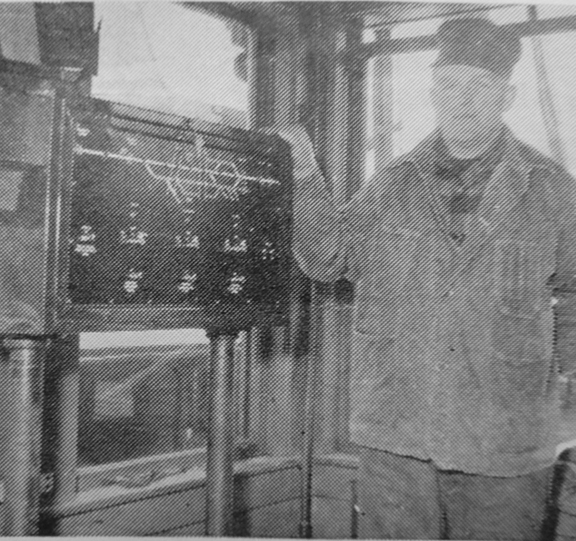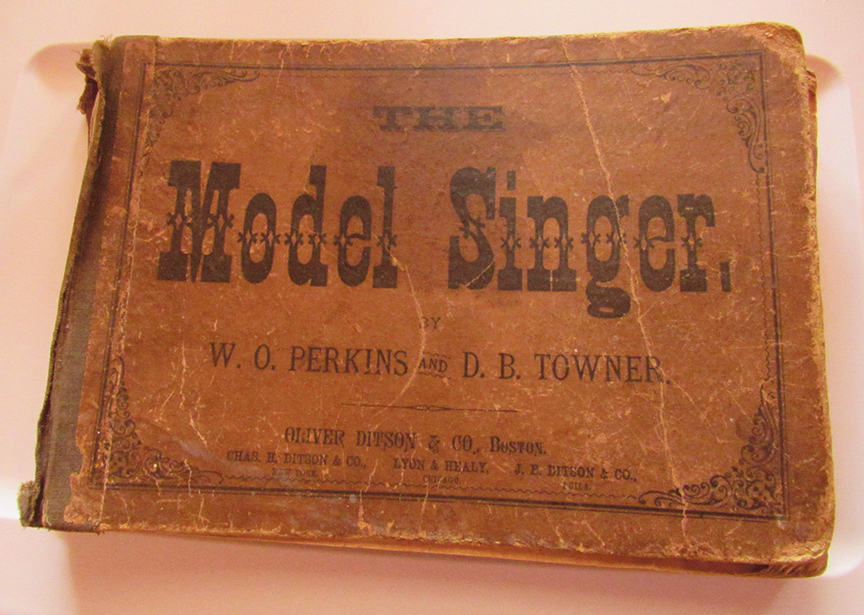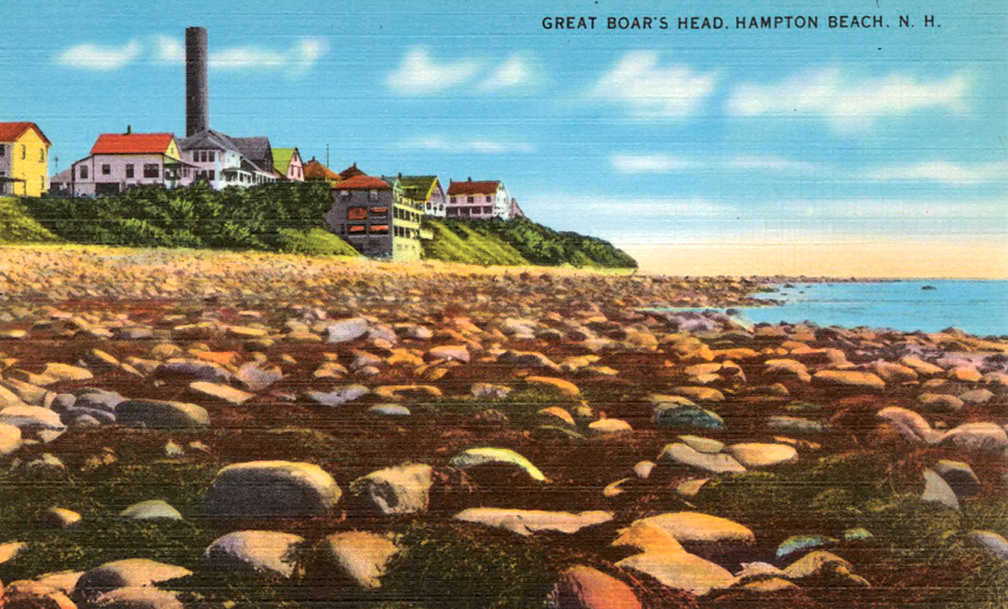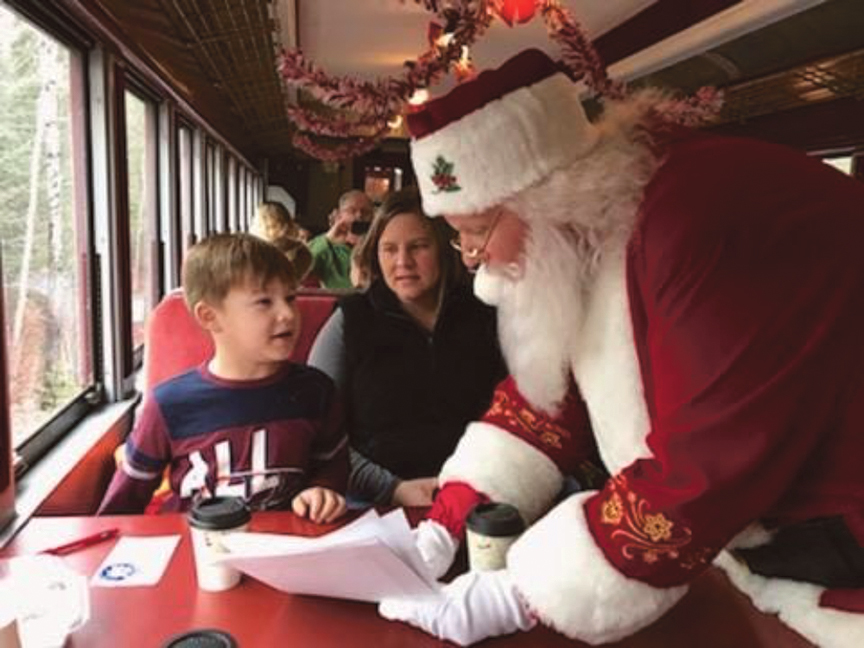Guarding Our Streets – Safety On The Tracks 70 Years Ago

PHOTO: Control Panel for signals on Main, Pleasant and Water Street – Fred O. Fuller, relief watchman on duty.


by Robert Hanaford Smith, Sr.
Weirs Times Contributing Writer
The railroad was once an important means of transportation in New Hampshire, carrying both people and freight throughout the state. Train service increased in the summer time and extra trains were added to accommodate the summer vacationers and the supplies they needed.
Though New Hampshire has been served by numerous railroad companies, by the time I came along the Boston and Maine Railroad pretty much monopolized the industry in this state. I do not dare to even try to estimate how many times I have crossed over railroad tracks where those tracks and an automobile road met. Those “crossings” throughout the country and this state, unfortunately have been the sites of many accidents and resultant fatalities.
On the first day of September, back in the year 1897, a couple were riding in a horse-drawn buggy on their way from Lakeport to Laconia when the driver, Frank W. Clay, didn’t stop to allow a B&M train to pass unhindered at a Messer Street Crossing. The buggy was hit by the train and demolished, and 28 year old Clay and his 27 year old passenger, Minnie Johnson were severely injured. A few days later Johnson died from her injuries. Clay recovered, but only after many weeks of recuperation.
In April of 1927 a 46 year old farmer from Northfield in an automobile failed to yield to a train at the Messer Street crossing and also lost his life. The man, Earnest Dow, was assumed not to have heard the train’s warning because of a “winter top” he had on his automobile. A passenger in the Dow car, Mrs. Murphy, was injured but survived the crash.
Those weren’t the only railroad crossing accidents or fatalities that have occurred at the crossings in this region of New Hampshire, and you might be surprised to find the number of railroad casualties in the country down through the years.

The Boston and Maine Railroad did take steps to try to improve safety at those many sites where the railroad crossed the highways. Early in the year 1953 the Boston and Maine Railroad completed a seven-month project to improve the warning signals at eight Laconia street crossing locations with modern equipment. The March 1953 issue of the Railroad’s magazine explained how the added protection for area driver’s operated.
The project covered a distance of five miles through Laconia and involved eight street crossings. The busiest crossings were those on Main Street on the north side of the Railroad Station and Pleasant Street which was on the south side. In 1953 traffic coming into the city from Meredith on the Parade Road or from Bristol and New Hampton by Meredith Center Road could choose to take the Pleasant Street route or to stay on Main Street into Veteran’s Square. Both routes crossed the railroad tracks near the Laconia Railroad Station. The other heaviest traffic crossing was in Lakeport near the Lakeport station.
This is how the purpose of the project was explained by the B&MRR: “In line with the railroad’s policy to modernize automatic block signaling as rapidly as possible, 10 semaphore-type signals were removed and six color light signals were installed as a corollary to the grade crossing improvements.”
The modernization included the latest type of electrically operated crossing “half-gates” with warning bells and flashing lights at the Main Street crossing, and Pleasant Street and Elm Street crossings were equipped with flashing lights and warning bells. The remaining five crossings featured new flashing lights only.
All of these systems were operated automatically by the trains as they approached the crossings.
In addition, the new systems at the Main Street, Pleasant Street, Water Street, and the flashing lights at Elm Street were set up so they could be operated manually. This system was managed by a human operator in an elevated cabin opposite the Laconia Station. This manual operating system allowed the warning system to be shut off when the train was at the station and the crossing lights, etc. had not been turned off automatically by the movement of the train(s). The construction of this new system for Laconia railroad crossings was done by the New Hampshire Division signal crew under the supervision of A.A.Wood and his assistant, E.H.York. They had some help from the Portland Division Signal crew.

The Boston and Maine Railroad was emphasizing the importance of safety as the influential company in 1953 not only was looking out for the safety of automobile drivers and pedestrians, they had discovered that the lack of safety procedures in the workplace was costing them money. The company placed the responsibility for keeping their workers safe on their supervisors. Supervisors were asked to redouble their efforts to detect and correct unsafe practices to prevent injuries. “Money spent for injuries and death claims,” wrote J.W. Kelton, a division general car foreman of the B&M, “is a total loss to all, and too, permanently disabling injuries or a fatality can quickly change all family plans and mode of living from one of average living conditions to one of hardship.”
The Boston and Maine Railroad reported that its earnings in 1952 were only $183,323, but said that $932,996 had been lost as a result of wastefulness. $365,761 of the “wasted” money was paid out because of injuries to employees, and $248,407 was paid for injuries for passengers and other people with claims against the company.
Railroad trains are few and far between in these parts in these modern days, but there are places where they still run for passengers and freight. I have been well-acquainted with the Laconia Railroad Station, especially during my high school days when I attended Laconia High coming in to city daily from New Hampton. I have crossed over the tracks on both the Main Street and Pleasant Street sides many, many times, and been stopped by the gates, bells, and flashing lights.
Many years ago I was driving on a country road in western New York with a car full of teenagers when upon coming around a curve I suddenly saw a long freight train crossing the road just in front of me. There was no gate, no flashing lights, no ringing bells. There was, I believe, the familiar crossbars at the crossing, indicating it was one. The car brakes were quickly and firmly applied and the car we were in came to a stop inches before it crashed into the side of the moving train. There was silence in the car as the freight train passed by, but I haven’t forgotten that close call. I don’t think my passengers have either.
Robert Hanaford Smith, Sr., welcomes your comments at danahillsmiths@yahoo.com



